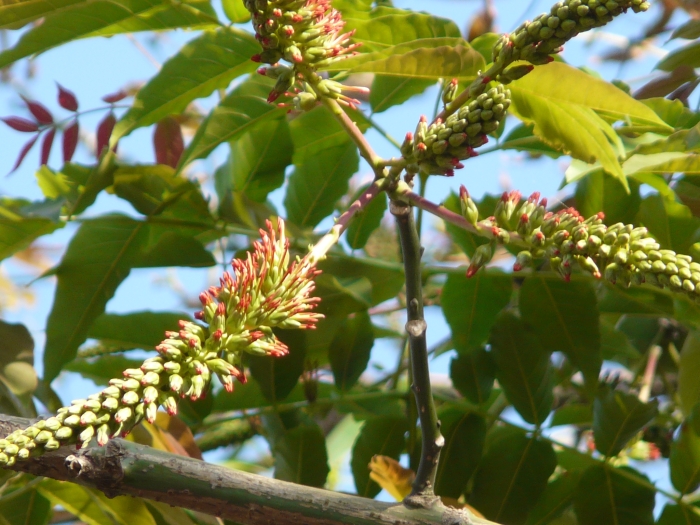Pink Cedar
(Acrocarpus fraxinifolius)
Pink Cedar (Acrocarpus fraxinifolius)
/
/

Dinesh Valke from Thane, India
CC BY-SA 2.0
Image By:
Dinesh Valke from Thane, India
Recorded By:
Copyright:
CC BY-SA 2.0
Copyright Notice:
Photo by: Dinesh Valke from Thane, India | License Type: CC BY-SA 2.0 | License URL: https://creativecommons.org/licenses/by-sa/2.0 | Uploader: Sreejithk2000 | Publisher: Wikimedia Commons | Title: Acrocarpus_fraxinifolius_(2196031374).jpg | Notes: User created page with UploadWizard |











































Estimated Native Range
Summary
Acrocarpus fraxinifolius, commonly known as Pink Cedar, is a deciduous tree native to the moist deciduous forests and riverine habitats of South and Southeast Asia, including India, Nepal, and Myanmar. It can reach heights of 50-65 feet (15-20 meters) and a width of 15-20 feet (5-6 meters), with a straight trunk and a well-branched crown. The tree is notable for its compound leaves that resemble those of the Ash tree and its bright red flowers that bloom in spring, creating a striking display. The flowers are followed by winged seed pods that are also visually appealing.
Pink Cedar is valued for its fast growth rate and ornamental qualities, including its vibrant floral display. It is commonly used as a shade tree in coffee and tea plantations, where it helps to protect the understory crops from direct sunlight. In urban settings, it serves as an attractive street or park tree. This species prefers full sun but can tolerate light shade. It requires medium amounts of water and thrives in well-drained soils. While it is generally easy to maintain, it may be susceptible to leaf spot diseases and should be monitored for signs of infection.CC BY-SA 4.0
Pink Cedar is valued for its fast growth rate and ornamental qualities, including its vibrant floral display. It is commonly used as a shade tree in coffee and tea plantations, where it helps to protect the understory crops from direct sunlight. In urban settings, it serves as an attractive street or park tree. This species prefers full sun but can tolerate light shade. It requires medium amounts of water and thrives in well-drained soils. While it is generally easy to maintain, it may be susceptible to leaf spot diseases and should be monitored for signs of infection.CC BY-SA 4.0
Plant Description
- Plant Type: Tree
- Height: 50-65 feet
- Width: 15-20 feet
- Growth Rate: Rapid
- Flower Color: Red
- Flowering Season: Spring
- Leaf Retention: Deciduous
Growth Requirements
- Sun: Full Sun
- Water: Medium
- Drainage: Medium
Common Uses
Low Maintenance
Natural Habitat
Moist deciduous forests and riverine habitats
Other Names
Common Names: Shingle Tree, Red Cedar, Single Tree, Kenya Coffeeshade, Pink-Cedar, Red-Cedar, Shingletree, Howligemara, Malaikonnai
Scientific Names: , Acrocarpus fraxinifolius, Acrocarpus combretiflorus, Acrocarpus fraxinifolius var. guangxiensis, Acrocarpus grandis, Mezoneuron grande, Mezoneurum grande,
GBIF Accepted Name: Acrocarpus fraxinifolius Wight & Arn.